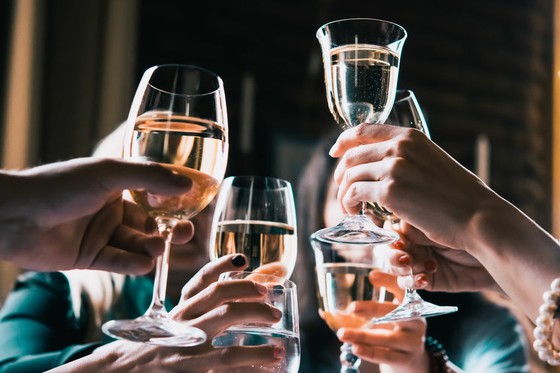 |
In Japan, mixing whiskey and water is called "mizuwari" while in Korea, mixing whiskey and beer is called "bombshu." In Japan, it is mostly diluted with water, but in Korea, there are various ways to drink it.
Around the 1960s, people drank pure white shochu (25-30 degrees) mixed with a pale blue liquid stomach medicine. Also, recently, 100-year-old sake (alcohol containing Chinese herbal medicine such as carrots) mixed with shochu (20% at that time) became popular as '50-year-old sake'.
Even today, mixing shochu with beer is commonplace, and even young people mix beer with cider. In this way, in Korea, alcohol is mixed with other alcohol or drinking water, but it is never diluted with water.
Here's one gossip in the newspaper
A few years ago, the consumption of the finest whiskey "Valentine 30 Years" exploded in South Korea, so the chairman of Valentine's Whiskey visited Seoul to express his gratitude and set up an evening banquet. An influential person in South Korea mixed the 30th anniversary of Valentine's Day with beer to create a "soju bomb" that excited the brewery.
However, the chairman of Valentine's Co., Ltd., who was watching it, said, "What is it like to drink a high-quality whiskey that has been carefully made for 30 years with something like beer?"
Koreans feel comfortable with "mixing" like this!
I received an email from a Japanese friend who read the previous manuscript. According to him, "Unlike Japanese people, Koreans mix the rice and curry together before eating curry and rice, and I was surprised to see several people poking a single ice adzuki bean with a spoon without hesitation." Of course, not all of them are like that, but there is no resistance to mixing them.
It is also obvious if you compare 'Kaiseki' and 'Kan Teishoku', which represent Japanese and Korean cuisine. Kaiseki is a kaiseki cuisine where each dish is served with great care. Seafood and other dishes such as beef and fish abalone are lavishly woven together on a large table and served at the same time as the boom.
It's not just about eating and drinking.
As I wrote before, in Japan, the main unit price and consumption tax are indicated separately (divided), but in Korea they are indicated as a lump (mixed). In Japan, the fares for transportation such as trains and subways are subdivided by section, but in South Korea, they are rough.
If you watch a TV Series, you will find indirect advertisements for restaurants, hamburger shops, health foods, cosmetics, etc. that are mixed in with the TV series. I'm sure people in Japan would say it's a mess when they see it.
Conversely, next time you watch a Korean TV Series (not a historical drama but a modern one), why not try to find out what kind of advertisements are mixed in what kind of scene?
Even in relationships, they want to mix quickly like a family. I call the lady in the cafeteria (a stranger) "Imo" (aunty), and at work I call co-workers "oppa" or "unni" depending on the age difference, so we deepen our intimacy. They establish a warm and welcoming relationship, just like a family, and listen to their unreasonableness.
* Contributed by Gon Yong-dae, representative of the Korea-Japan Temperament Comparison Study Group. Graduated from the Department of History, Seoul University, and completed the Graduate School of Newspapers at the same university. Worked at the Korean Air Training Center. Worked as Asiana Airlines' Japan and China managers. Author of "Do you really know 'Korea'?"
2022/12/07 12:22 KST


